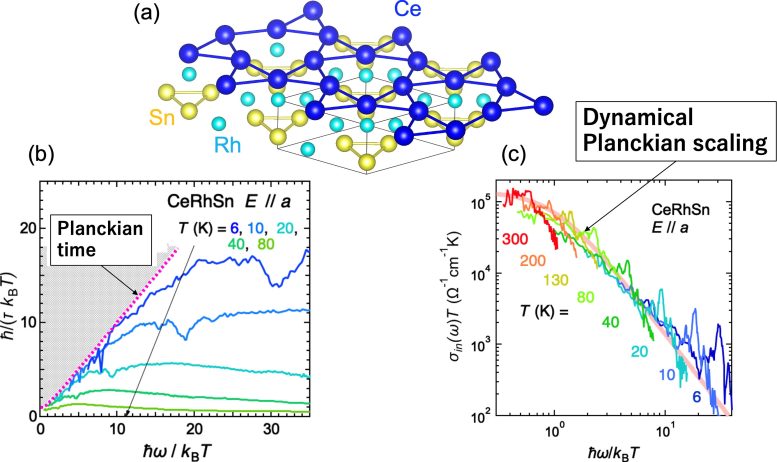“Heavy” Electrons Hold the Key to a New Type of Quantum Computer

Discovery of Planckian time limit offers new opportunities for quantum technologies.
A collaborative team of researchers in Japan has identified “heavy fermions”—electrons with greatly increased effective mass—that display quantum entanglement controlled by Planckian time, the fundamental unit of time in quantum mechanics. This breakthrough suggests new possibilities for using these effects in solid-state materials to advance the development of next-generation quantum computers.
Heavy fermions emerge when conduction electrons in a material interact strongly with localized magnetic electrons, causing their effective mass to grow dramatically. This behavior produces unusual properties, including unconventional superconductivity, making it a major focus in condensed matter physics. The compound examined in this study, Cerium-Rhodium-Tin (CeRhSn), is part of a family of heavy fermion systems characterized by a quasi-kagome lattice structure, which is notable for its geometrical frustration effects.

Experimental findings in CeRhSn
The research team examined the electronic properties of CeRhSn, a material recognized for showing non-Fermi liquid behavior at relatively high temperatures.
Detailed measurements of its reflectance spectra confirmed that this unusual behavior persists nearly up to room temperature, with heavy electron lifetimes approaching the Planckian limit. The spectral patterns, which can be represented by a single mathematical function, provide strong evidence that the heavy electrons in CeRhSn are quantum entangled.

Implications for quantum computing
Dr. Shin-ichi Kimura of The University of Osaka, who led the research, explains, “Our findings demonstrate that heavy fermions in this quantum critical state are indeed entangled, and this entanglement is controlled by the Planckian time. This direct observation is a significant step towards understanding the complex interplay between quantum entanglement and heavy fermion behavior.”
Quantum entanglement is a key resource for quantum computing, and the ability to control and manipulate it in solid-state materials like CeRhSn offers a potential pathway towards novel quantum computing architectures. The Planckian time limit observed in this study provides crucial information for designing such systems.
Further research into these entangled states could revolutionize quantum information processing and unlock new possibilities in quantum technologies. This discovery not only advances our understanding of strongly correlated electron systems but also paves the way for potential applications in next-generation quantum technologies.
Reference: “Anisotropic non-Fermi liquid and dynamical Planckian scaling of a quasi-kagome Kondo lattice system” by Shin-ichi Kimura, Muhammad Frassetia Lubis, Hiroshi Watanabe, Yasuyuki Shimura and Toshiro Takabatake, 5 August 2025, npj Quantum Materials.
DOI: 10.1038/s41535-025-00797-w
Funding: Japan Society for the Promotion of Science
Never miss a breakthrough: Join the SciTechDaily newsletter.
Source link

